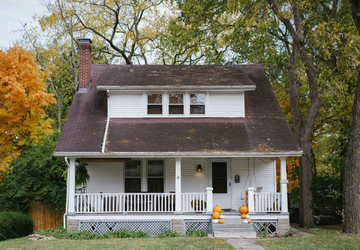Why is There a Shortage of Single-Family Homes in the Current Market?
The dream of owning a single-family home has become increasingly elusive for many Americans. A persistent shortage of these properties has fueled rising prices, intense competition, and frustration among potential buyers. This blog post explores the complex factors contributing to this housing crisis.
The dream of owning a single-family home has become increasingly elusive for many Americans. A persistent shortage of these properties has fueled rising prices, intense competition, and frustration among potential buyers. This blog post explores the complex factors contributing to this housing crisis.
Underbuilding the American Dream
The root of the single-family home shortage lies in a chronic underbuilding of housing units over decades. The Great Recession of 2008 dealt a severe blow to the housing market, with new construction plummeting to historically low levels. During this period, many builders went out of business, and those who remained were hesitant to take on new projects due to financial uncertainties and a lack of consumer confidence.
While the market has partially recovered, it has struggled to keep pace with the growing population and changing household dynamics. The demand for housing has outstripped supply for years, creating a backlog that is difficult to overcome.
The Millennial Factor

Millennials are entering their prime homebuying years. This surge in demand has intensified competition for existing homes, particularly single-family dwellings. As millennials seek larger spaces to accommodate growing families, the desire for single-family homes has become more pronounced.
Moreover, millennials have delayed homebuying compared to previous generations, often due to financial constraints such as student loan debt and the high cost of living in many urban areas. Now, as this generation reaches their 30s and 40s, there is a substantial pent-up demand for homeownership. Millennials comprised 37% of homebuyers in 2021, the highest of any generation, further straining the already limited supply.
Rising Land and Construction Costs
The cost of land and construction materials has skyrocketed in recent years. This increase in expenses has made it more challenging and less profitable for builders to construct new homes, particularly affordable ones. The price of lumber, for instance, saw unprecedented spikes during the COVID-19 pandemic, increasing by over 300% at its peak. Although prices have since stabilized, they remain higher than pre-pandemic levels.
Institutional Investors and Rental Market
Institutional investors have entered the housing market in force, purchasing single-family homes to convert them into rental properties. While this provides additional housing options, it reduces the inventory of homes available for purchase, further exacerbating the shortage. These investors, often backed by substantial financial resources, can outbid traditional homebuyers, making it difficult for individuals and families to compete.
A report by the Urban Institute found that in 2021, institutional investors accounted for 18% of all home purchases in some metropolitan areas. This shifts a portion of the housing stock from owner-occupied to rental properties. While renting can be a viable option for many, the preference for homeownership remains strong among Americans, driven by the desire for stability, investment, and community.
Zoning Restrictions and NIMBYism
Zoning regulations and local opposition to new development, often referred to as "Not in My Backyard" (NIMBY) attitudes, have hindered the construction of new housing. Many communities have stringent zoning laws that limit the types of housing that can be built, often favoring single-family homes on large lots. These restrictions can prevent the development of higher-density housing that could alleviate some of the pressure on the housing market.
NIMBYism further complicates efforts to increase housing supply. Residents in established neighborhoods often oppose new developments, fearing changes to the character of their community, increased traffic, and strain on local resources. This opposition can delay or derail housing projects, contributing to the ongoing single family homes shortage. To address these issues, some cities and states are exploring zoning reforms and other measures to encourage the development of diverse housing types.
The Impact of the COVID-19 Pandemic
The COVID-19 pandemic accelerated existing housing market trends. As people spent more time at home, they reevaluated their living situations, leading to increased single-family homes demand with yards and home offices. Remote work became more prevalent, allowing many to consider living further from city centers, where single-family homes are more common and affordable.
Simultaneously, supply chain disruptions and labor shortages impacted home construction, further limiting inventory. Builders faced delays in obtaining materials and securing labor, which slowed the completion of new homes. The pandemic also caused economic uncertainty, leading some potential sellers to hold off on listing their homes, further reducing the available supply.
Consequences of the Shortage

The shortage of single-family homes has had far-reaching consequences. Homebuyers face intense competition, bidding wars, and the need to make significant compromises. It is not uncommon for homes to sell well above their asking price, with buyers waiving contingencies and inspections to make their offers more attractive. This competitive environment can be disheartening and financially draining for many.
Homeowners have seen their equity grow, providing financial security and opportunities for refinancing or home improvements. However, they also face challenges when trying to downsize or relocate. The high cost of moving to a new home, coupled with the competitive market, can make it difficult for current homeowners to find suitable new properties.
Potential Solutions
Addressing the single-family home shortage requires a multifaceted approach. Increasing housing supply through zoning reforms, incentivizing construction, and promoting mixed-use development are essential steps. Local governments can play a crucial role by revising zoning laws to allow for higher-density housing and reducing bureaucratic hurdles that delay construction projects.
Supporting affordable housing initiatives is also vital. This can include providing subsidies or tax incentives for developers to build affordable homes, as well as investing in public housing and other forms of government-supported housing. Ensuring that affordable housing is distributed throughout communities can help prevent concentrations of poverty and promote social and economic diversity.
Exploring alternative housing options can help alleviate the pressure on the single-family home market. This includes encouraging the development of accessory dwelling units (ADUs), which are smaller, self-contained living spaces on the same property as a single-family home. ADUs can provide additional housing options without requiring significant new land development.
Innovative construction methods, such as modular and prefabricated homes, can also contribute to increasing the housing supply. These methods can reduce construction time and costs, making it more feasible to build affordable homes. Embracing new technologies and materials can further enhance efficiency and sustainability in homebuilding.
Conclusion
The shortage of single-family homes is a complex issue with deep-rooted causes and significant consequences. While the challenges are substantial, addressing them is crucial to ensuring the American dream of homeownership remains attainable for future generations. By taking a comprehensive approach that includes zoning reforms, support for affordable housing, and innovative construction methods, we can begin to alleviate the housing crisis and create a more equitable and sustainable housing market.